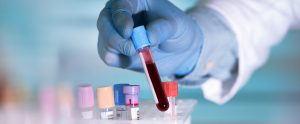Diagnosis of restricted growth
Initial diagnosis of restricted growth disorder in children is relatively straightforward.
Firstly, height can be measured by a paediatrician to see if it falls below the third percentile of standard growth charts. If it falls below this, the growth rate of the individual is below that of than their expected age. A doctor will also look at a family history before conducting a series of tests to help diagnose the condition.

Tests
Blood tests give doctors an opportunity to analyse chromosomes in order to effectively diagnose some specific conditions. Urine tests can identify enzyme deficiency based problems, such as mucopolysaccharide disease. In addition to this, x-rays or skin and bone marrow biopsies can help identify any underlying problem.
If a growth hormone deficiency is suspected, an additional insulin tolerance test can be carried out. Insulin is injected into the patient’s body and causes their sugar levels to drop. This aims to test the function of the pituitary gland, which should release growth hormones when these levels fall. If there is a reduced level of hormone or none at all, the problem has thus been identified

